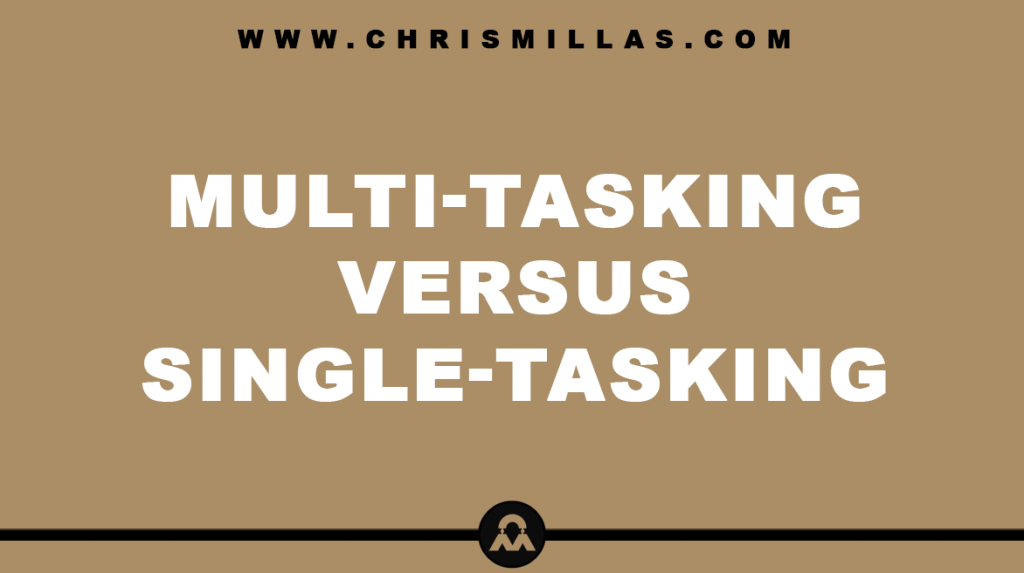In this post, we’ll deep dive into Multi-Tasking versus Single-Tasking, defining exactly what they are, determining the differences, assessing which strategy is more conducive to success and more.
Multi-Tasking Versus Single-Tasking
Multi-Tasking refers to the process of focusing on multiple activates at a time. Single-Tasking refers to the process of focusing on a single activity at a time.
Multi-Tasking Is A Myth
According to a 2010 Harvard study, we spend 46.9% of our waking hours thinking about something other than what we’re doing ― in other words, Multi-Tasking.
However, when Multi-Tasking, what we are actually doing is switching back and forth in rapid succession between activities.
In the words attributed to Chinese philosopher Confucius: “Life is really simple, but we insist on making it complicated.”
“To do two things at once is to do neither.” ― Publilius Syrus
Single-Tasking Is A Super-Power
We are neurologically wired to perform better when focusing on one activity at a time, so it won’t be a surprise to know that studies conclusively show Single-Tasking to be exponentially more effective than Multi-Tasking.
Multi-Tasking wastes brain power. Single-Tasking saves brain power. When Multi-Tasking, we are constantly switching between activities which taxes our cognitive bandwidth. When Single-Tasking, we eliminate this task-switching process and conserve cognitive bandwidth.
Multi-Tasking wastes time. Single-Tasking saves time. Studies show that the cost in terms of the extra time it takes to switch tasks when Multi-Tasking can increase by over 100% for complicated tasks.
Multi-Tasking makes us stupid. Single-Tasking makes us smart. Studies show that people who Multi-Task make more mistakes and poorer decisions than people who Single-Task. In fact, it is estimated that people lose 28% of an average workday to Multi-Tasking ineffectiveness.
Furthermore, through MRI scans of Multi-Tasker’s brains, research shows that performing more than one activity at once decreases the brain density in the anterior cingulate cortex ― the part of the brain associated with impulse control and empathy.
While Multi-Tasking results in lower efficiency and productivity, more stress and less happiness and fulfilment, Single-Tasking results in higher efficiency and productivity, less stress and more happiness and fulfilment. While, Multi-Tasking results in lower quality results in more time, Single-Tasking results in higher quality results in less time.
The Key To Success
Success requires us to go deep. Going deep requires us to go narrow. Going narrow requires us to focus on one thing at a time. Therefore, success is the result of Single-Tasking.
Multi-Tasking Versus Single-Tasking Table Summary
Below is a table summarising the differences between Multi-Tasking and Single-Tasking.
| Multi-Tasking | Single Tasking |
|---|---|
| Multiple Activities | A Single Activity |
| Wastes Brain Power | Saves Brain Power |
| Wastes Time | Saves Time |
| Decreases Productivity | Increases Productivity |
| Increases Stress | Decreases Stress |
| Decreases Wellbeing | Increases Wellbeing |
Summary
Multi-Tasking refers to focusing on multiple activities at a time. Single-Tasking refers to focusing on one activity at a time.
Studies conclusively tell us that the process of focusing on one activity at a time ― the process of Single-Tasking ― results in more effective outcomes.
When we attempt to do more, we end up doing less and when we attempt to do less, we end up doing more.







